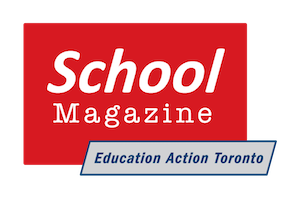The best-case scenario for Ontario schools: 1 extra teacher for every 700 students
Ontario schools will soon welcome back more than two million students. In these exceptional times, schools need more educators to help students make up for lost time while adhering to health and safety measures. A lot is at stake.
But despite Premier Ford’s claim that he’s doing everything he can do to make schools safe, there is no help on the way. Even if school boards dig deep into their reserves, Ontario will get, at most, one additional teaching staff member for every 700 students.
Let’s dig into the numbers.
The Ontario government has allocated $30 million “for teacher staffing to support supervision, keeping classes small and other safety related measures.” Using the benchmark salary listed in the Ministry of Education’s 2020-2021 Technical Paper ($78,519 + 10.10% in benefits), this amount would pay for 347 full-time teachers.
The federal government is providing $763 million for Ontario schools. Half of this amount ($381 million) is already available, but the Ontario government has chosen to allocate only $70 million “for the temporary hiring of educators.” This amount pays for another 810 teachers.
Combined, the only two funding envelopes for additional teachers add up to $100 million, enough to hire 1,157 teachers.
On August 13, the Ministry of Education announced that an additional $496 million would be made available through the “unlocking” of school board reserves. In an earlier post, we showed how there is actually only $153 million in new money available as a result of this measure.
If boards were to use the entire reserve amount for teaching staff, that would pay for another 1,770 teachers, bringing the total number of additional teachers to 2,927.
The ministry projects 2,037,815 students will attend school this year, which means there would be at most one additional teacher for every 700 students. That’s the best-case scenario for Ontario for additional teaching staff.
Since there are close to 134,000 teachers and early childhood educators in Ontario schools, this best-case scenario would represent a 2% increase in the number of teaching staff directly supporting students. You can’t have smaller class sizes across the province with only 2% more teachers.
In the past six months, Ontario’s children have been deprived of formal learning and peer interaction. Pre-existing learning and development challenges are likely to have worsened as many children weren’t able to access supports from home. Academic and social disparities among students are likely to have widened as COVID-19 affected families differently. This is the time to provide children with more supports, for the sake of their health and their futures. But that’s not happening.

Ricardo Tranjan is a political economist and senior researcher with the Canadian Centre for Policy Alternatives’ Ontario office. You can follow him on Twitter at @ricardo_tranjan.
This article is reprinted with permission.

